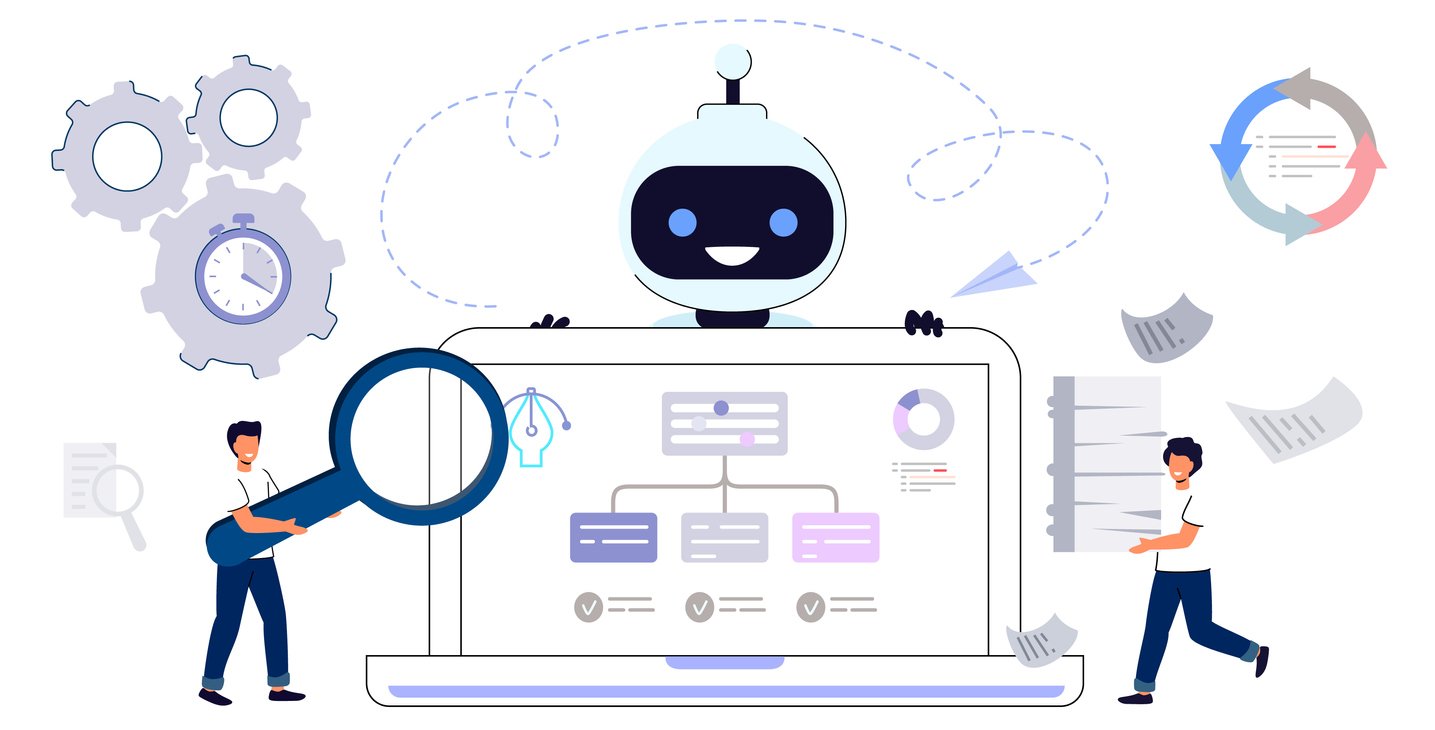
What Is Smarketing [Benefits, Implementation & Best Practices]
 Updated on
Updated on
 By Bradley Kovacs
By Bradley Kovacs
Bradley Kovacs
Bradley has been passionate about technology since childhood, starting with Microsoft Flight Simulator at age six. In college, he automated his data e...
learn more
Bradley Kovacs
Bradley has been passionate about technology since childhood, starting with Microsoft Flight Simulator at age six. In college, he automated his data e...
Table of Contents
Table of Contents
Picture this: the sales team is sipping coffee in their cozy corner, discussing the latest client wins, while the marketing team is brainstorming their next creative campaign. Two separate worlds, each thriving in its ways. Amazing, right?
But what if we told you there was a way to merge these two worlds, creating a powerful force to take your business to the next level? That's right. It's time to dive into the exciting world of smarketing!
Smarketing, or sales and marketing alignment, brings your sales and marketing teams together to achieve a common goal. And it's not just some passing trend. A study by MarketingProfs showed that businesses with aligned sales and marketing teams see a 36% increase in customer retention and 38% higher sales win rates.
So, how about we dive into the benefits of smarketing, how to implement it successfully, and the best practices to keep in mind? Buckle up and get ready to discover how this sales and marketing strategy can transform your business!
Overview of Smarketing

To succeed in the intense business environment, sales and marketing teams must collaborate to achieve maximum revenue growth. This is precisely where "smarketing" shines as an effective solution.
Smarketing refers to the alignment and collaboration between sales and marketing teams to achieve common goals, such as increasing sales and revenue, improving lead generation and customer acquisition, and enhancing overall customer experience.
The Concept of Smarketing
The concept of smarketing is based on the idea that sales and marketing teams should work hand-in-hand to create a seamless customer experience. So how do they do this?
By sharing data, insights, and strategies, sales and marketing teams can better understand their target audience and tailor their messaging and sales approach accordingly. This collaboration can help ensure that marketing efforts generate high-quality leads that are more likely to convert into sales.
One of the key benefits of smarketing is that it helps break down the traditional silos between sales and marketing teams. Here's how: when teams cultivate a shared understanding of their respective roles and responsibilities, they can work in unison with unprecedented productivity and efficacy.
This can lead to faster sales cycles, increased customer satisfaction, and higher revenue growth.
Another key aspect of smarketing is using technology and analytics to track and measure performance. By leveraging tools like a CRM system, marketing automation, and data analytics, teams can gain valuable insights into their customers' behavior and preferences.
Such data can help them identify new opportunities for growth and areas for improvement.
The Importance of Smarketing in Business Systems
According to research, companies that have mastered the art of sales and marketing alignment are thriving, with a whopping 20% annual growth rate.
This is why. Smarketing business systems ensure the integration of initiatives between the two teams, leading to higher conversion rates, increased revenue, and improved customer experience. Some of the benefits include:
- Better alignment between departments
- Improved customer insights across multiple channels
- Better collaboration between departments
- Data-driven decisions and more efficient use of resources
The Key Components of Smarketing
To ensure smarketing business systems work effectively, some key components are necessary. These include:
- Aligned Goals: Your marketing and sales teams should clearly understand the organization's overall objectives and work together to achieve them.
- Shared Data and Insights: To achieve aligned goals, sales and marketing teams need access to shared data and insights. This information can be useful in improving marketing campaigns, sales strategies, and customer experience.
- Collaborative Processes: Collaborative processes refer to the shared processes and workflows between your sales and marketing teams. For example, marketing might develop a lead generation campaign, while sales will follow up on those leads. By collaborating on the development and execution of these processes, both teams can ensure that they are working towards the same goals.
- Joint Accountability: This refers to the shared responsibility for achieving business objectives, meaning both teams are accountable for the success of their joint efforts. By holding each other accountable, these teams can ensure they are working towards and committed to achieving the same goals.
Benefits of Smarketing

It’s hard to label something “essential” without clearly defining how it can help your business. So let’s discuss the key benefits of smarketing.
1. Improved Customer Experience
Smarketing can help provide a more seamless and cohesive experience for customers throughout their journey with a company. As a brand, you can increase your ability to satisfy customers by merging your sales and marketing teams to create a more unified approach to understanding customer needs and desires.
With this joint effort, your brand will be able to craft tailored messages and offerings that better meet the expectations of its customers.
2. Increased Sales and Marketing Efficiency
By implementing smarketing, businesses can reduce friction between sales and marketing teams and ensure their efforts are better aligned. This can result in improved efficiency, increased customer satisfaction, and higher revenue growth.
For example, marketing and sales teams can collaborate to create content tailored specifically for their target audience.
Doing so can help them reach potential customers more effectively, improve lead conversion rates, and boost overall sales performance.
3. Better Lead Management
With smarketing, sales and marketing teams can collaborate to create a more integrated and coordinated approach to lead management. This can include shared lead qualification criteria, lead scoring models, and communication protocols. All these help to manage leads properly throughout their sales cycle between the two teams.
Allow us to elaborate below:
|
Lead Management Tasks |
Description |
|
Lead Capture |
Involves collecting and storing information about potential customers. Your smarketing team can do this through various channels, such as web forms, CRM systems, smarketing mail, or phone calls. |
|
Lead Activity Tracking |
Monitor leads' actions and behaviors as they interact with your brand, website, content, or sales team. This can help your smarketing team understand their level of interest, engagement, and readiness to buy. |
|
Intelligent Routing |
Directing leads to the right person or team based on their needs, preferences, and behavior. This can be done automatically using rules, algorithms, or machine learning. |
|
Lead Nurturing |
Building relationships with leads over time through personalized and relevant communication. The goal is to educate, inform, and engage leads at every stage of the buying journey, something your smarketing team can do easily! |
4. Improved Sales and Marketing ROI
The improvement in ROI resulting from sales and marketing team alignment can vary depending on various factors, such as the size of the organization, the industry, and the specific strategies implemented.
A good example of this is the concept of customer segmentation. By synchronizing sales and marketing efforts, teams can identify different segments of their target audience based on buyer behavior and interests, allowing them to create more personalized customer experiences.
How to Implement Smarketing

Implementing smarketing requires integrated and coordinated efforts between sales and marketing teams. It’s important to follow the right steps to ensure successful coordination.
Here’s what we mean:
1. Define the Smarketing Strategy
The first thing you need to do is to create a unified strategy. This should include the goals and objectives of smarketing and how the sales and marketing teams will collaborate to reach those goals.
You also need to train the sales and marketing team on new actions they will carry out. This includes how the teams will communicate and share information and any processes for sharing leads and other data.
2. Foster a Culture of Collaboration
Smarketing is all about collaboration between marketing and sales teams, so nurturing a culture of cooperation, understanding, and trust within your organization is important. When you do so, here are some of the benefits you can enjoy:
|
Collaboration Strategies |
Benefits |
|
Shared Company’s Vision |
A shared vision creates a sense of purpose and direction for the team, which helps to align their efforts toward achieving the company's goals. |
|
Mutual Respect and Understanding |
Each team member should respect their colleagues' skills, knowledge, and experience and be willing to listen to their ideas and opinions. |
|
Win-Win Attitude |
A win-win attitude means that each team member is focused on finding mutually beneficial solutions that benefit both the company and the customer. |
|
Good Communication |
Effective communication is essential for good collaboration in sales and marketing teams. Each team member should communicate openly and honestly, providing feedback and asking for clarification when necessary. |
3. Align Sales and Marketing Goals
Aligning sales and marketing goals is crucial, as both teams should clearly understand the company's overall business objectives, target market, and buyer personas.
They should also be aware of the marketing and sales metrics you will measure. By aligning goals, your sales and marketing teams can work collaboratively towards a common objective and reduce friction.
4. Share Data and Insights Between Teams
Collecting valuable data and insights about customers and prospects can help each team do its job better.
For example, the marketing team can share insights about which channels and campaigns drive the most leads. On the other hand, the sales team can share feedback on the quality of the leads they receive.
By sharing this information, both teams can optimize their efforts, improve the customer experience, and close more deals.
5. Continuously Evaluate and Improve the Smarketing Process
Continuously evaluating and improving the smarketing process requires commitment. You can do it by tracking and analyzing the performance of both teams' efforts and adjusting the strategy accordingly.
Regular meetings between sales and marketing leaders can be scheduled to discuss progress and identify areas for improvement.
Additionally, implementing customer feedback loops can help identify areas where you can improve the sales and marketing process to deliver better results. Overall, through continuous evaluation and improving the smarketing process, organizations can ensure they are always working towards their business objectives and delivering value to their customers.
Best Practices for Maximizing the Effectiveness of Smarketing

If your business is looking for ways to improve how you attract, engage and convert customers, then maximizing the effectiveness of smarketing is a great place to start.
Here are some of the best practices you need to consider.
1. Embrace Technology and Automation
Embracing technology is more than just having the latest technology. It’s about understanding how it can benefit your business and customer experience. Technology such as CRM software, marketing automation tools, and social media can help your team be more efficient with their time.
Utilizing these tools will ensure that customer data is collected systematically and tracked across both departments. With such details, automation becomes a powerful tool to use. It can help do the following:
- Streamline smarketing processes, like automated emails based on customer behavior,
- Track marketing campaigns to measure effectiveness, and
- Manage email lists and segmentation, and more.
2. Foster a Culture of Continuous Improvement
As business strategies are ever-evolving and changing, the same holds for smarketing. To ensure your sales and marketing teams work to their fullest potential, setting goals that both departments can work towards together is essential. They should have regular check-ins to review progress and look into areas needing improvement.
Moreover, encouraging open communication between the teams will ensure everyone clearly understands where they are going and what needs to be done. Fostering a culture of continuous improvement involves a lot of trials and errors, so don't be afraid to take risks.
Experimenting with different approaches will help you discover what works best for your business and what doesn't.
3. Encourage Open Communication and Feedback
Open communication is the foundation of any healthy relationship. That’s right. It's one of those elements you don't often think about consciously or take notice of - it just exists and allows everything else to function efficiently.
When your teams lack open dialogue, they become confused and unclear about the expectations. This often leads to unsatisfactory results for the business. However, encouraging open communication, such as smarketing mail and feedback, allows the teams to decide how best to move forward.
4. Encourage Joint Responsibility and Accountability
Joint responsibility and accountability are also essential for taking smarketing to the next level. As explained, your sales and marketing teams can drive better results when working together towards a common goal.
Having each team involved in the decision-making process can also allow them to understand the big picture and what it means for the customer experience. Understanding how their actions affect other departments helps foster team collaboration while increasing company efficiency.
Conclusion
With smarketing, you can improve your ROI, increase customer satisfaction, and streamline your services. Also, when you implement the best practices such as communication, shared goals, and data analysis, businesses can achieve success through smarketing.
To facilitate smarketing success, Ringy CRM offers a comprehensive platform that enables businesses to streamline their sales and marketing processes, track leads, and analyze data in real time. With Ringy, businesses can bridge the gap between their sales and marketing teams, resulting in a more efficient and effective operation.
So if you're looking to improve your business's smarketing efforts, try Ringy CRM today and start collaborating like never before! After all, as the saying goes, teamwork makes the dream work.

Skyrocket your sales with the CRM that does it all.
Calling? Check. SMS? Check. Automation and AI? Check. Effortlessly keep in touch with your customers and boost your revenue without limits.

Take your sales to new heights with Ringy.
Sales in a slump? Ringy gives you the tools and flexibility you need to capture leads, engage with them, and turn them into customers.
Subscribe to Our Blog
Enter your email to get the latest updates sent straight to your inbox!
Categories
Related Articles






































































